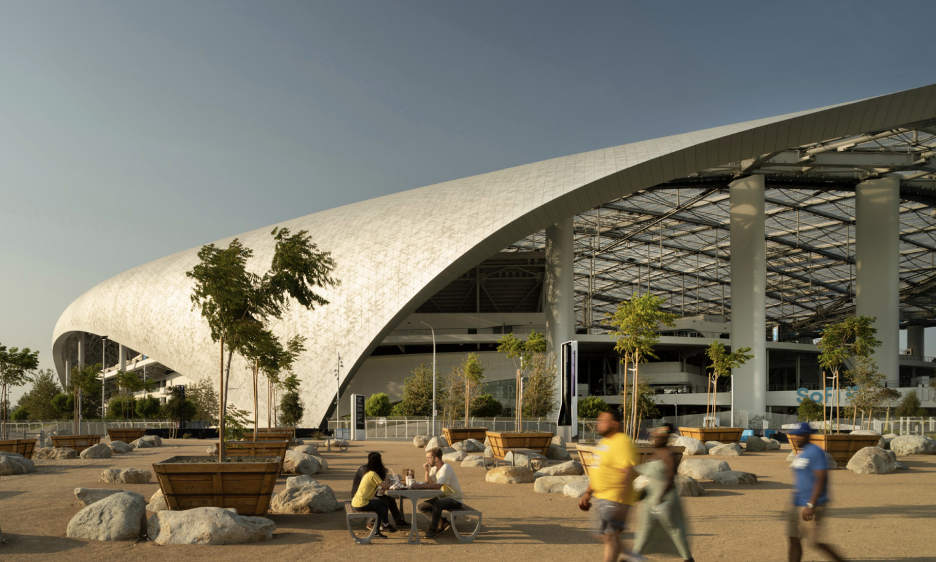It’s time for Brisbane to rethink the role of our Sporting venues. Here’s why.
When the Miami Grand Prix rolled through Hard Rock Stadium earlier this year, the headlines were all about a certain Aussie phenom named Oscar Piastri, who clinched his fourth victory of the season.
But look past the track and the champagne spray, and something equally compelling was happening in the background: a stadium quietly proving how good design can outlast the roar of a race.
Originally designed for NFL, the Hard Rock Stadium is part event space, part community anchor, part urban strategy. It supports everything from Formula 1 to international music concerts, and major tennis championships to public health programs - all without compromising atmosphere or functionality.
This kind of versatility doesn’t happen by accident. It’s the result of a deliberate, climate-responsive, $500 million renovation.
Brisbane, gearing up for the 2032 Olympic and Paralympic Games, finds itself with a rare opportunity to raise the bar even further by adopting similar strategies.
Image: Sports Business Journal
Designing for a subtropical climate
Cities with subtropical climates need a different kind of stadium logic: one that prioritises airflow, shade, texture, and joy.
Another blueprint is Rio, Brazil, where the architecture often celebrates a similar subtropical climate. There, the streets are sequenced through shaded spaces. Buildings channel rainwater into visible cascades. Footpaths are designed with tactile, thoughtful materials that can withstand erosion from heavy rainfall.
And in Los Angeles — another Olympic city in the making — the HKS-designed SoFi Stadium offers a compelling model for subtropical design. Its translucent canopy and open-air structure harness the region’s mild climate, reducing reliance on artificial cooling while maintaining comfort year-round. But the real story is in its versatility. Beyond being home to the two NFL teams, it’s hosted the Super Bowl, College Football National Championship, WrestleMania, and will soon welcome events for the 2026 FIFA World Cup and the 2028 Olympics. Adjacent to the stadium sits the YouTube Theater, a more intimate venue that extends the site’s cultural programming beyond sport.
Image: Nic Lehoux
Brisbane has the chance to adopt this spirit by drawing from the richness of its own environment.
To do so, we must first move away from the notion that climate is just ‘something to manage’. In other words, we should design for our climate and celebrate it — not work against it. Climate shapes how people move through public space, how they gather, and how they feel while doing it. When architecture responds to sun, rain, and sky, it can create spaces that feel alive.
We’ve seen glimpses of what’s possible locally, too. The Anna Meares Velodrome, for example, brings in soft natural light through its tensile membrane, and the Suncorp Stadium canopy protects spectators whilst embracing its own openness to the sky. They are venues that respond to their environment, not just shelter from it. That’s the kind of thinking Brisbane needs more of.
Image: Dan Michael Photos
A stadium that belongs to the city
Victoria Park — the proposed site for the new Olympic stadium — comes with a story already written. Once an Indigenous gathering place and later a golf course, it now stands ready for a new chapter. This is a chance to create something deeply public: a stadium set within an historic indigenous landscape and a subtropical parkland, accessible year-round and welcoming to all.
Stadiums don’t need to be islands. They can sit within precincts that feel like parks — open, shaded, green, and connected. Imagine a precinct that doubles as a native arboretum, where landscaping reflects local ecosystems and where every path, plaza, and seating area has been designed for comfort and curiosity. School groups could visit to learn about native plants or Indigenous knowledge systems. Locals could use the space regardless of whether a major event is on.
The site also sits directly across from one of Brisbane’s major hospitals — creating a rare opportunity to link health, sport, and research. Why shouldn't a stadium double as a venue for wellness programs, injury recovery, or public health events?
Put simply: Brisbane’s Olympic venues should feel just as right on a quiet Tuesday as they do during a gold medal match.
Good ideas won’t get us over the line on their own. We need boldness. The kind of design leadership that isn’t afraid to challenge old models or say no to copy-paste templates.
Brisbane doesn’t need to prove it’s like London, LA, or Paris. It needs to show what’s possible when a subtropical city designs with its own climate, people, and place in mind.
At Open Architecture Studio, we specialise in sports, public, and climate-responsive design. Recently, we’ve been thinking heavily about how Brisbane can prepare for the Olympics. If you're interested in continuing the conversation, let’s chat.



